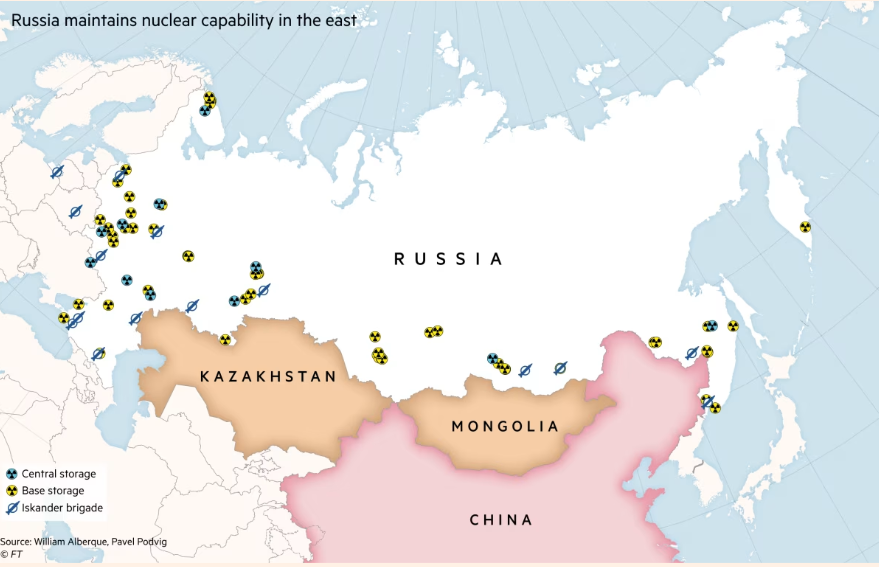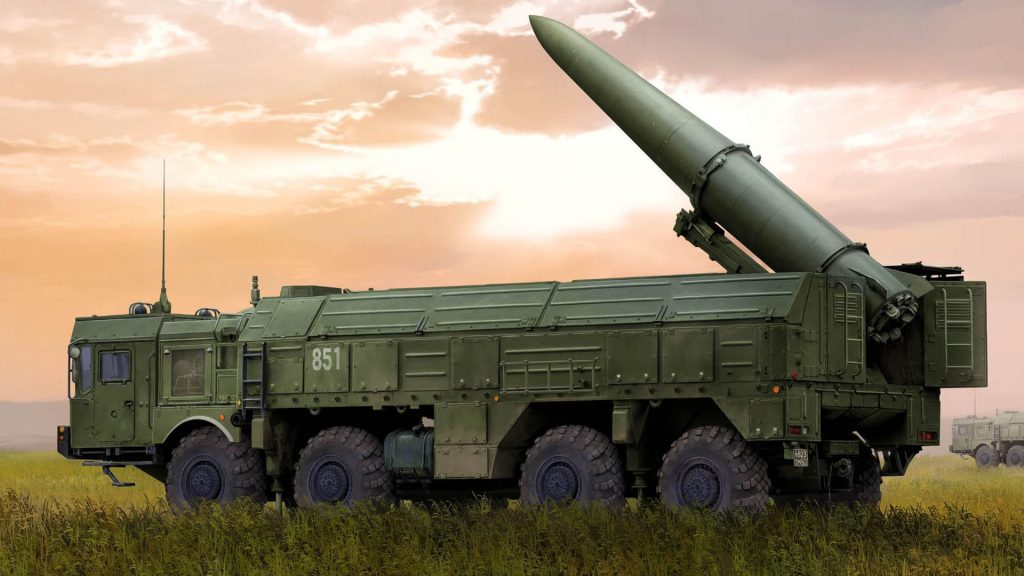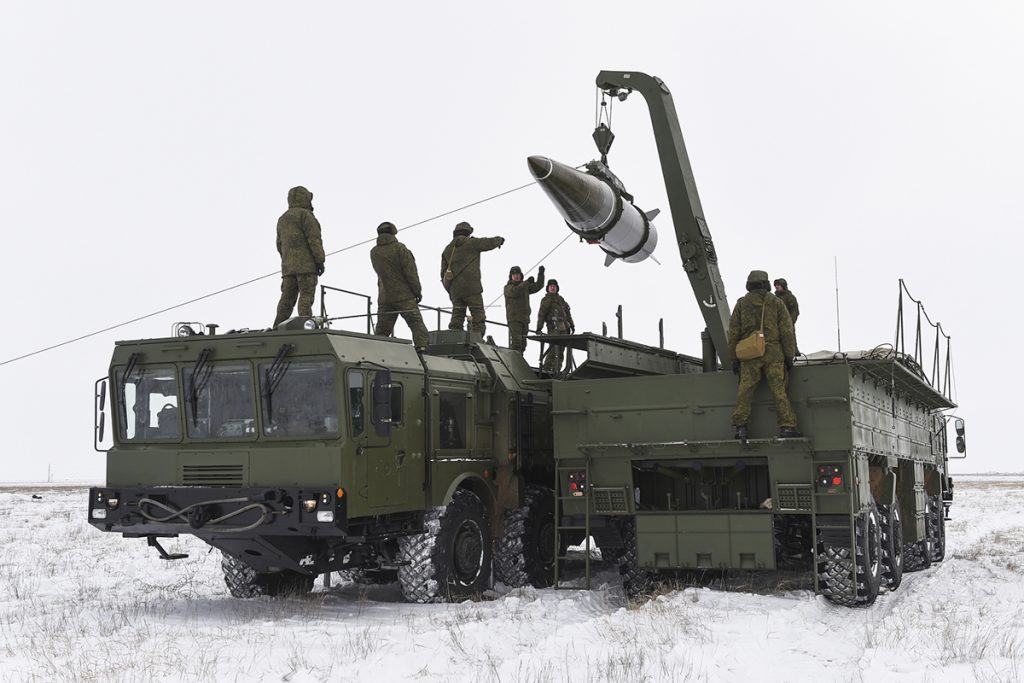![Fattah: The Russian files reveal the standards of nuclear weapons [χάρτης] – Financial postman](https://www.ot.gr/wp-content/uploads/2024/02/russian-nuclear.jpg)
Russian forces are training to use tactical nuclear weapons in the early stages of a conflict with a major world power. This comes through leaked Russian military files, in which the plan includes scenarios for invading China.
The classified documents, cited by the Financial Times, set a red line for the use of tactical nuclear weapons that is lower than Russia has publicly acknowledged, according to experts who reviewed and verified the documents.
Putin: American suspicions of the existence of nuclear weapons in space coming from Russia [γράφημα]
The file consists of 29 secret Russian military files compiled between 2008 and 2014. It includes war game scenarios and presentations to naval officers, discussing the operating principles for the use of nuclear weapons.
The criteria for a possible nuclear response range from a hostile invasion of Russian territory to more specific triggers, such as the destruction of 20% of Russia's submarine-based strategic ballistic missiles.
“It's the first time we've seen documents like this come out publicly,” Alexander Gabuev, director of the Carnegie Center for Eurasia and Russia, told the Financial Times. “It shows that the operational threshold for using nuclear weapons is very low if the desired effect cannot be achieved by conventional means.”
Shortest range of conventional nuclear weapons
Russia's tactical nuclear weapons are designed for limited use in Europe and Asia, in contrast to longer-range “strategic” weapons aimed at the United States. Modern warheads are more powerful than the weapons dropped on Nagasaki and Hiroshima in 1945.
The defense plans reveal deep suspicion of China among the Russian elite, even as Putin began to forge an alliance with Beijing, which as early as 2001 included not first using nuclear weapons.
Over the years, Russia and China have deepened their cooperation. The war in Ukraine strengthened Russia's position as a junior partner in their relationship, as China gave Moscow an economic lifeline from Western sanctions. But even as the countries move closer together, documents show that Russia's Eastern Military District has several scenarios for a Chinese invasion.
The documents provide a rare glimpse into how Russia views its nuclear arsenal as the cornerstone of its defense policy.
A separate Navy presentation, unrelated to the war with China, sets out criteria for a potential nuclear attack, including an enemy incursion into Russian territory, the defeat of interceptor units or an imminent enemy attack using conventional weapons.
The documents summarize the threshold as a set of factors at which losses suffered by Russian forces “irreversibly lead to their failure to stop a major enemy attack.”
Other conditions include the destruction of 20% of Russia's submarine-launched strategic ballistic missiles, 30% of its nuclear-powered attack submarines, three or more cruisers, three airfields, or a simultaneous attack on a primary and reserve coastal command.
Russia possesses 2,000 tactical nuclear warheads
Putin said last year that he was “negative” about the use of tactical nuclear weapons, and boasted that Russia had a conventional arsenal larger than that of NATO countries. The United States estimated that Russia possesses at least 2,000 of these weapons.
Putin said last year that Russia's nuclear doctrine includes two possible criteria for using nuclear weapons: retaliation for a first nuclear strike, and if Russia's “existence as a state is threatened.”
But Putin himself added that neither criteria was likely to be met, and rejected public calls from hard-liners to lower the cap.
“At this level, what is required is for units to retain a credible option for policymakers to use nuclear weapons,” added Jack Watlin, senior research fellow for ground operations at the Royal United Services Institute.
Even as Moscow approached Beijing and moved its forces from the east to Ukraine, it continued to strengthen its eastern defenses.
Although Putin alone has the authority to direct a nuclear first strike, the low threshold for tactical nuclear use is consistent with a principle some Western observers call “escalation to de-escalation.”
What is “escalation to de-escalation”?
It is possible that Russia will use a tactical weapon to shock an opponent into a large-scale war, especially one in which the United States could intervene.
Ukrainian officials say Putin's nuclear threats convinced the United States and other allies not to arm Kiev more decisively early in the conflict.
Russia would likely have a higher threshold for using tactical nuclear weapons against Ukraine, which does not have its own nuclear capabilities or the ability to launch a ground invasion on the same scale, than China or the United States.
Russian leaders believe that while a nuclear strike against China or the United States might lead to “sobriety,” a nuclear strike in Ukraine would likely escalate the conflict and lead to immediate intervention by the United States or the United Kingdom, the latter of which Putin wants it.

“Hipster-friendly coffee fanatic. Subtly charming bacon advocate. Friend of animals everywhere.”








More Stories
Ukraine says it foiled Russian plot to kill Zelensky – two Ukrainian officials arrested
Constantinople: The history of Chora Monastery with its ornate mosaics – Reactions to conversion into a mosque
Israel rejects Hamas’s truce proposal and goes ahead with the operation in Rafah